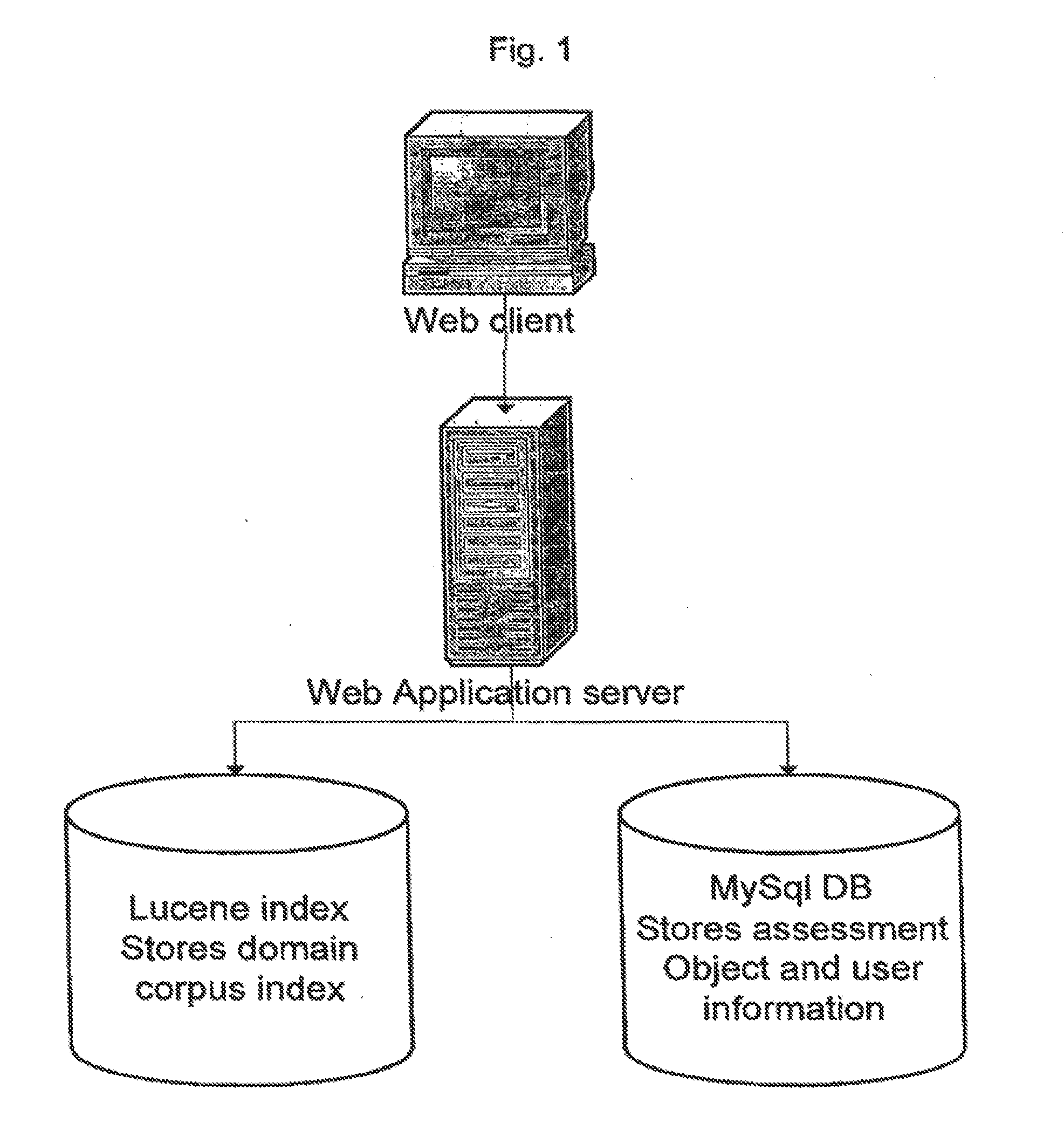Automated Short Free-Text Scoring Method and System
a scoring method and system technology, applied in the field of automatic short freetext scoring methods and systems, to achieve the effect of convenient querying
- Summary
- Abstract
- Description
- Claims
- Application Information
AI Technical Summary
Benefits of technology
Problems solved by technology
Method used
Image
Examples
experiment 1
Creating the Best Corpus
[0049]When instructional designers create a question to be scored by SAMText, they create a corpus of documents which address the topic of the question (Dutch Elm disease in the present example). As described previously, three parameters define the collection of a corpus: (1) a specific topic keyword, (2) a general domain keyword, and (3) the size of the corpus. This experiment involved an empirical study in which these parameters were systematically varied to find the best corpus for the question.
[0050]Pilot studies conducted in other domains (psychopharmacology and social decision making) had found that the SAMText algorithm shows greatest agreement with human raters when the corpus uses a broad general domain keyword, one category or level more specific than the entire Internet, and uses a specific topic keyword, one category or level more general or abstract than the specific topic of the question. Applying the pilot study findings to the current experime...
experiment 2
Comparing SAMText Scores Using the Best Corpus to Scores of Human Raters
[0057]After determining from Experiment 1 how to create the best corpus for use with the SAMText algorithm, a primary issue concerns the accuracy of the SAMText algorithm in scoring short free-text answers. To evaluate this issue, Experiment 2 involved determining (a) how well SAMText scores correlate with human raters' scores relative to (b) how well human raters' scores correlate with each other. Table 4 below shows how scores from each rater or scorer, i.e. SAMText and four human scorers or raters S1, S2, S3 and S4, correlate with the average score from the other scorers or raters for questions Q1 and Q2. The correlations are expressed as numerical values, with higher numerical values corresponding to higher correlations.
TABLE 4Correlation of Scores From Individual Raters-Human Raters andSAMText-to Scores of Other RatersSAMText-S1-S2-S3-S4-Avg humanall otherall otherall otherall otherscorersscorersscorersscor...
experiment 3
Comparing SAMText's Categorizations of Scores to Human Raters' Categorization of Scores
[0062]Experiment 2 compared the correlations of scores between SAMText and human raters. By way of further explanation, correlations represent the relationships between two sets of scores, which allows a sensitive comparison of relative assessment of scores, and provides an excellent measure of the predictability of one set of scores to another. While correlations are maximally sensitive to accuracy of the raw scoring systems, in the context in which SAMText is applied the outcome of importance is not how well do raw scores from SAMText correlate with human scores, but how closely do the categorizations of the learners' answers correspond between human raters and SAMText. To evaluate this issue, the categorization of learners' scores is analyzed using Cohen's Kappa. It is anticipated that an instructional designer using the present invention will want to categorize learners' scores into categories...
PUM
 Login to View More
Login to View More Abstract
Description
Claims
Application Information
 Login to View More
Login to View More - R&D
- Intellectual Property
- Life Sciences
- Materials
- Tech Scout
- Unparalleled Data Quality
- Higher Quality Content
- 60% Fewer Hallucinations
Browse by: Latest US Patents, China's latest patents, Technical Efficacy Thesaurus, Application Domain, Technology Topic, Popular Technical Reports.
© 2025 PatSnap. All rights reserved.Legal|Privacy policy|Modern Slavery Act Transparency Statement|Sitemap|About US| Contact US: help@patsnap.com



